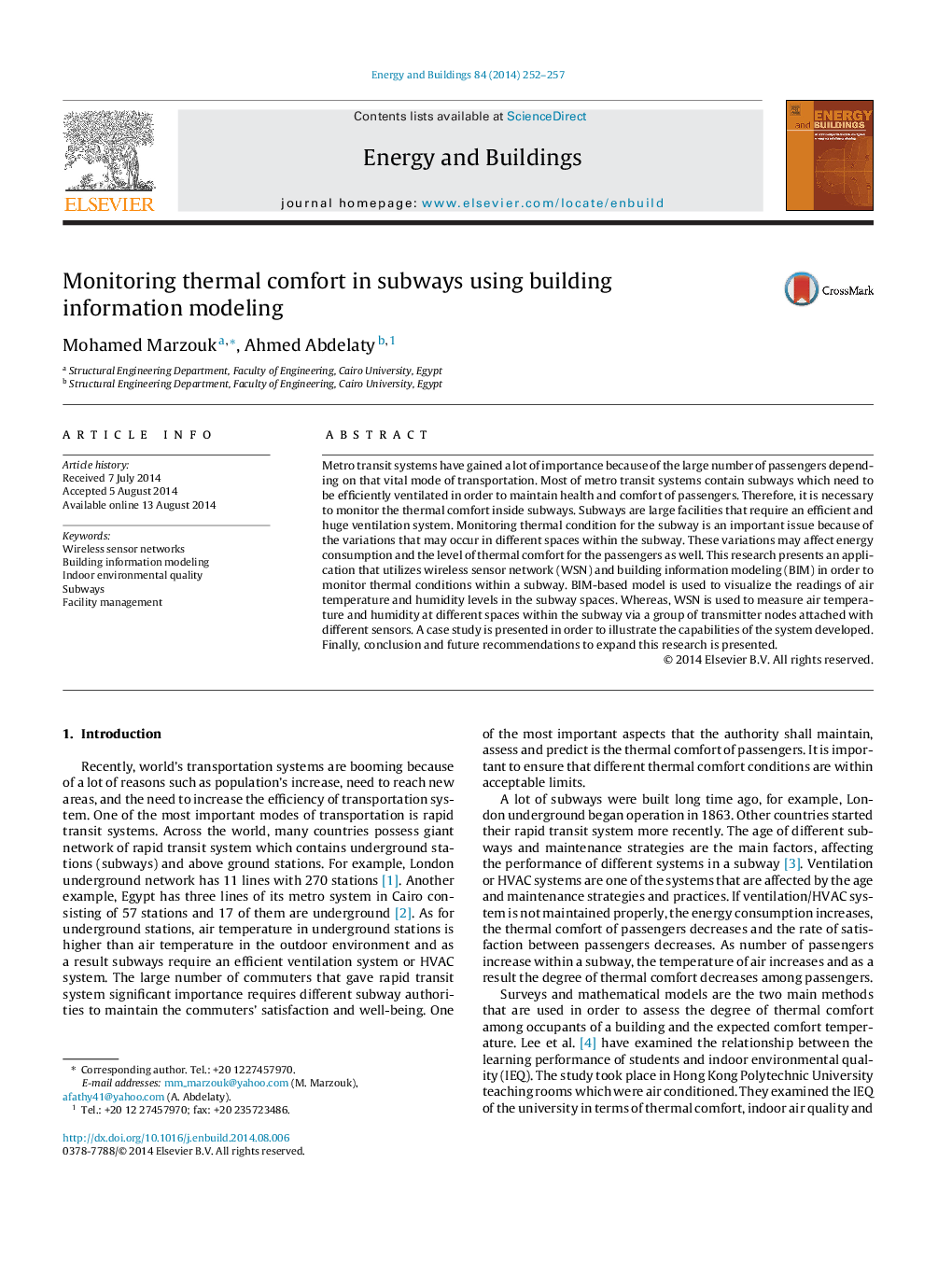| Article ID | Journal | Published Year | Pages | File Type |
|---|---|---|---|---|
| 262877 | Energy and Buildings | 2014 | 6 Pages |
•Visualizing the readings of air temperature and humidity levels in the subway spaces.•Automating the measuring of air temperature and humidity at different spaces within the subway.•Predicting problems in the HVAC system of the subway using strong visualization capabilities.•Enhancing the operators of subways with a tool that aids in facility management.
Metro transit systems have gained a lot of importance because of the large number of passengers depending on that vital mode of transportation. Most of metro transit systems contain subways which need to be efficiently ventilated in order to maintain health and comfort of passengers. Therefore, it is necessary to monitor the thermal comfort inside subways. Subways are large facilities that require an efficient and huge ventilation system. Monitoring thermal condition for the subway is an important issue because of the variations that may occur in different spaces within the subway. These variations may affect energy consumption and the level of thermal comfort for the passengers as well. This research presents an application that utilizes wireless sensor network (WSN) and building information modeling (BIM) in order to monitor thermal conditions within a subway. BIM-based model is used to visualize the readings of air temperature and humidity levels in the subway spaces. Whereas, WSN is used to measure air temperature and humidity at different spaces within the subway via a group of transmitter nodes attached with different sensors. A case study is presented in order to illustrate the capabilities of the system developed. Finally, conclusion and future recommendations to expand this research is presented.
